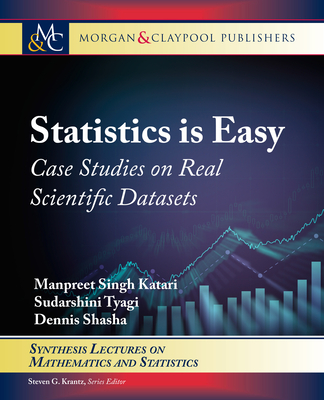AI for Robotics: Toward Embodied and General Intelligence in the Physical World (Paperback)
暫譯: 機器人學的人工智慧:朝向具身與通用智慧的實體世界
Imran, Alishba, Gopalakrishnan, Keerthana
- 出版商: Apress
- 出版日期: 2025-05-03
- 售價: $1,220
- 貴賓價: 9.5 折 $1,159
- 語言: 英文
- 頁數: 451
- 裝訂: Quality Paper - also called trade paper
- ISBN: 9798868809880
- ISBN-13: 9798868809880
-
相關分類:
Reinforcement
立即出貨 (庫存=1)
買這商品的人也買了...
-
 如何衡量萬事萬物:大數據時代,做好量化決策、分析的有效方法 (How to Measure Anything: Finding the Value of
如何衡量萬事萬物:大數據時代,做好量化決策、分析的有效方法 (How to Measure Anything: Finding the Value of$480$379 -
 $293了不起的 Markdown
$293了不起的 Markdown -
 大數據資料可視化:Python QT GUI 程式設計
大數據資料可視化:Python QT GUI 程式設計$880$695 -
 Feature Engineering and Selection: A Practical Approach for Predictive Models
Feature Engineering and Selection: A Practical Approach for Predictive Models$2,250$2,138 -
 $564知識圖譜實戰
$564知識圖譜實戰 -
 $305知識圖譜:方法、工具與案例
$305知識圖譜:方法、工具與案例 -
 Llms and Generative AI for Healthcare: The Next Frontier
Llms and Generative AI for Healthcare: The Next Frontier$1,938$1,836 -
 Hands-On Large Language Models: Language Understanding and Generation (Paperback)
Hands-On Large Language Models: Language Understanding and Generation (Paperback)$2,546$2,412
相關主題
商品描述
This book approaches robotics from a deep learning perspective. Artificial intelligence (AI) has transformed many fields, including robotics. This book shows you how to reimagine decades-old robotics problems as AI problems and is a handbook for solving problems using modern techniques in an era of large foundation models.
The book begins with an introduction to general-purpose robotics, how robots are modeled, and how physical intelligence relates to the movement of building artificial general intelligence, while giving you an overview of the current state of the field, its challenges, and where we are headed. The first half of this book delves into defining what the problems in robotics are, how to frame them as AI problems, and the details of how to solve them using modern AI techniques. First, we look at robot perception and sensing to understand how robots perceive their environment, and discuss convolutional networks and vision transformers to solve robotics problems such as segmentation, classification, and detection in two and three dimensions. The book then details how to apply large language and multimodal models for robotics, and how to adapt them to solve reasoning and robot control. Simulation, localization, and mapping and navigation are framed as deep learning problems and discussed with recent research. Lastly, the first part of this book discusses reinforcement learning and control and how robots learn via trial and error and self-play.
The second part of this book is concerned with applications of robotics in specialized contexts. You will develop full stack knowledge by applying the techniques discussed in the first part to real-world use cases. Individual chapters discuss the details of building robots for self-driving, industrial manipulation, and humanoid robots. For each application, you will learn how to design these systems, the prevalent algorithms in research and industry, and how to assess trade-offs for performance and reliability. The book concludes with thoughts on operations, infrastructure, and safety for data-driven robotics, and outlooks for the future of robotics and machine learning.
In summary, this book offers insights into cutting-edge machine learning techniques applied in robotics, along with the challenges encountered during their implementation and practical strategies for overcoming them.
What You Will Learn
- Explore ML applications in robotics, covering perception, control, localization, planning, and end-to-end learning
- Delve into system design, and algorithmic and hardware considerations for building efficient ML-integrated robotics systems
- Discover robotics applications in self-driving, manufacturing, and humanoids and their practical implementations
- Understand how machine learning and robotics benefit current research and organizations
Who This Book Is For
Software and AI engineers eager to learn about robotics, seasoned robotics and mechanical engineers looking to stay at the cutting edge by integrating modern AI, and investors, executives or decision makers seeking insights into this dynamic field
商品描述(中文翻譯)
這本書從深度學習的角度探討機器人技術。人工智慧(AI)已經改變了許多領域,包括機器人技術。本書展示了如何將數十年來的機器人問題重新構想為AI問題,並作為在大型基礎模型時代中使用現代技術解決問題的手冊。
本書首先介紹通用機器人技術,機器人是如何建模的,以及物理智能如何與建立人工通用智能的運動相關,同時提供該領域的現狀、挑戰及未來發展的概述。本書的前半部分深入定義機器人技術中的問題,如何將其框架化為AI問題,以及如何使用現代AI技術解決這些問題的細節。首先,我們研究機器人的感知和感測,以了解機器人如何感知其環境,並討論卷積網絡和視覺變壓器,以解決機器人在二維和三維中的分割、分類和檢測等問題。接著,本書詳細說明如何將大型語言模型和多模態模型應用於機器人技術,以及如何調整它們以解決推理和機器人控制問題。模擬、定位、地圖製作和導航被框架化為深度學習問題,並與最近的研究進行討論。最後,本書的第一部分討論強化學習和控制,以及機器人如何通過試錯和自我對弈來學習。
本書的第二部分關注於機器人在專門情境中的應用。您將通過將第一部分中討論的技術應用於現實世界的案例來發展全棧知識。各章節討論自駕車、工業操作和人形機器人等應用的詳細內容。對於每個應用,您將學習如何設計這些系統、研究和行業中流行的算法,以及如何評估性能和可靠性之間的權衡。本書最後對數據驅動的機器人技術的運營、基礎設施和安全性進行了思考,並展望了機器人技術和機器學習的未來。
總之,本書提供了應用於機器人技術的前沿機器學習技術的見解,以及在實施過程中遇到的挑戰和克服這些挑戰的實用策略。
您將學到的內容:
- 探索機器人技術中的機器學習應用,涵蓋感知、控制、定位、規劃和端到端學習
- 深入系統設計,以及構建高效的機器學習整合機器人系統的算法和硬體考量
- 發現自駕車、製造和人形機器人的機器人應用及其實際實施
- 了解機器學習和機器人技術如何惠及當前的研究和組織
本書適合對象:
渴望了解機器人技術的軟體和AI工程師、希望通過整合現代AI保持在前沿的資深機器人和機械工程師,以及尋求對這一動態領域見解的投資者、高管或決策者。
作者簡介
Alishba Imran is a machine learning and robotics developer focusing on robot learning for manipulation and perception. She is currently conducting research in reinforcement learning and unsupervised learning with Pieter Abbeel at the Berkeley AI Research Lab. Alishba has worked on perception at Cruise, developed simulation object manipulation methods at NVIDIA, and led efforts to reduce prosthetics costs at SJSU. At Hanson Robotics, she improved manipulation in Sophia the Robot, and at Kindred.AI, she contributed to robots that have picked up over 140 million units in production.
Keerthana Gopalakrishnan is a senior research scientist at Google Deepmind, working on robot manipulation and the Gemini project. She was educated at Carnegie Mellon University and Indian Institute of Technology. Her research concerns large language models for robotic planning, scaling visual language models for low level control, and cross-embodiment robot learning.
作者簡介(中文翻譯)
Alishba Imran 是一位專注於機器學習和機器人學的開發者,主要研究機器人在操作和感知方面的學習。她目前在伯克利人工智慧研究實驗室與 Pieter Abbeel 進行強化學習和無監督學習的研究。Alishba 曾在 Cruise 從事感知相關工作,在 NVIDIA 開發模擬物體操作方法,並在 SJSU 領導降低義肢成本的努力。在 Hanson Robotics,她改善了 Sophia the Robot 的操作能力,而在 Kindred.AI,她為生產中已經處理超過 1.4 億個單位的機器人做出了貢獻。
Keerthana Gopalakrishnan 是 Google Deepmind 的高級研究科學家,專注於機器人操作和 Gemini 項目。她在卡內基梅隆大學和印度理工學院接受教育。她的研究涉及用於機器人規劃的大型語言模型、用於低層控制的視覺語言模型的擴展,以及跨身體機器人學習。































